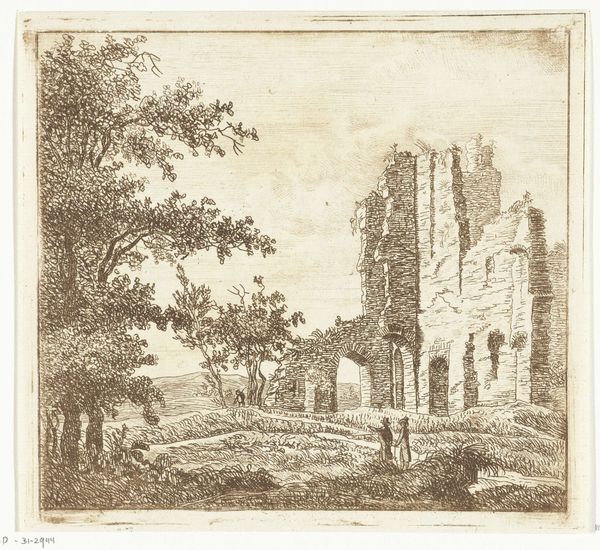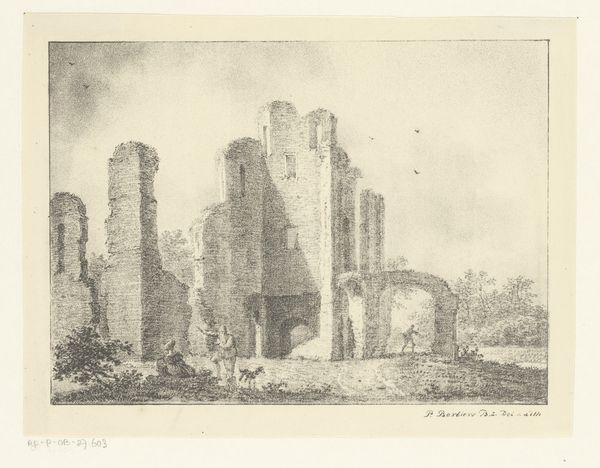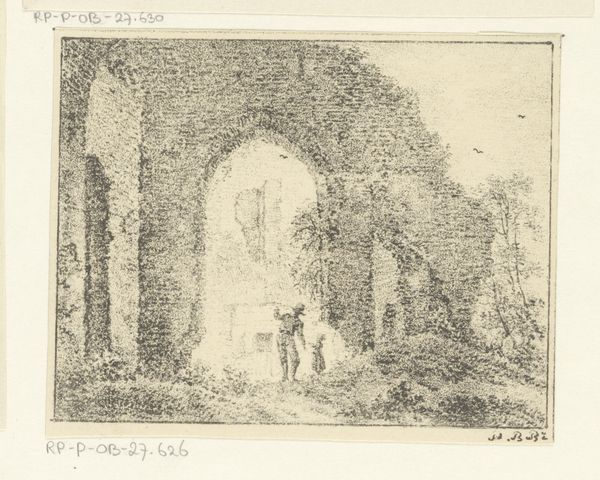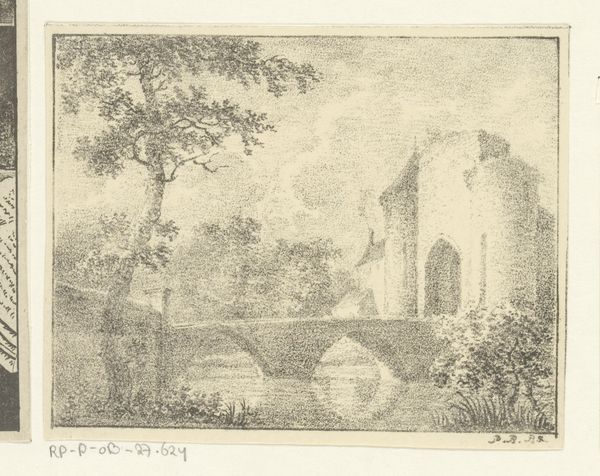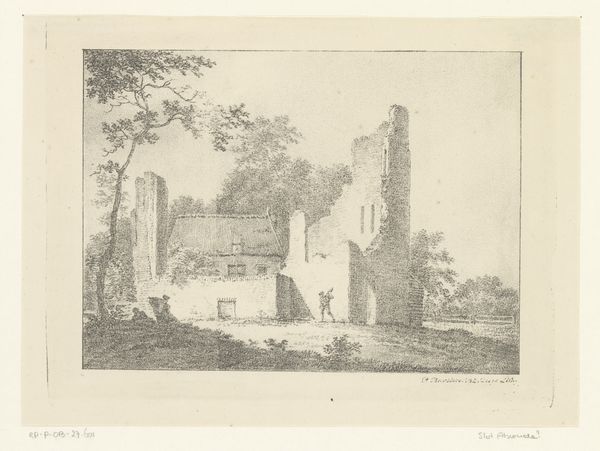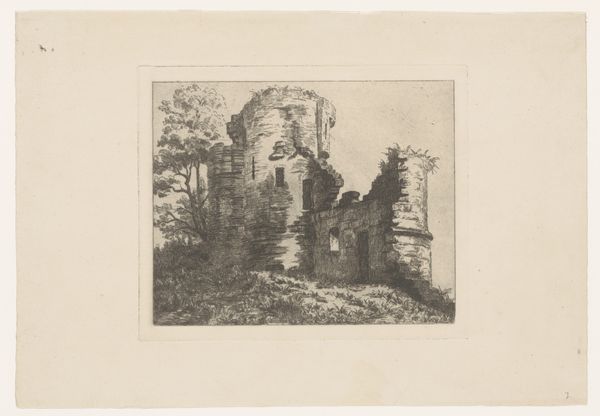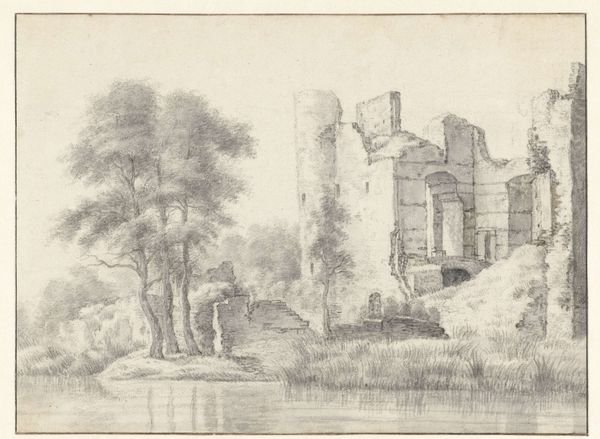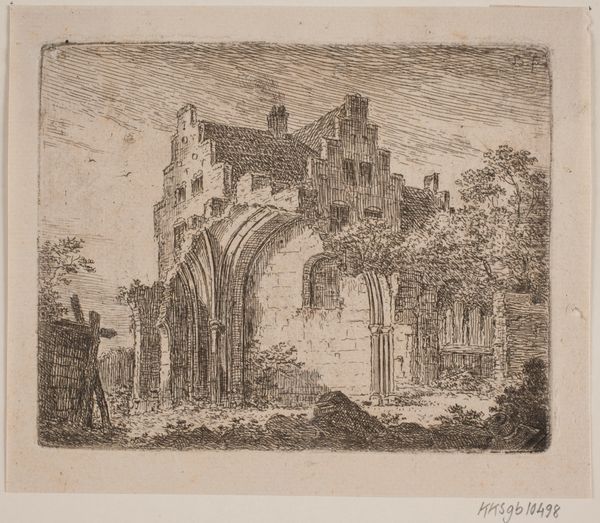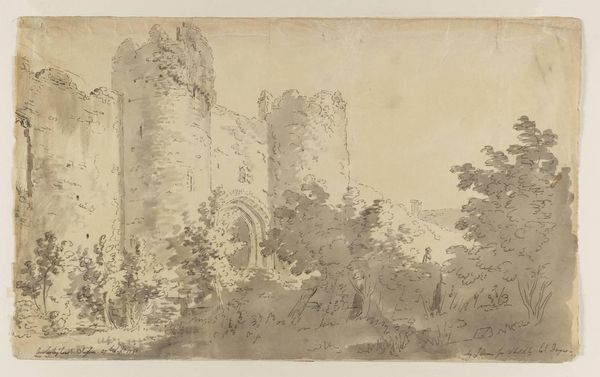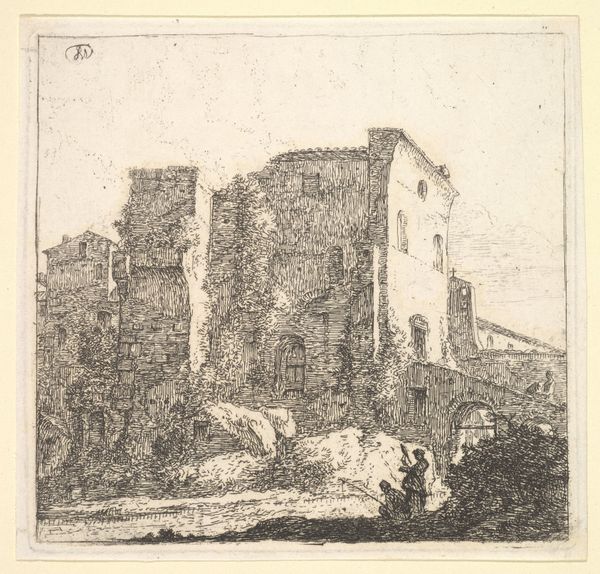
drawing, pencil
#
drawing
#
landscape
#
romanticism
#
pencil
Dimensions: height 100 mm, width 126 mm
Copyright: Rijks Museum: Open Domain
Editor: Here we have Pieter Barbiers' "Ruïne met twee figuren," created between 1809 and 1837, using pencil on paper. The ruin looms, doesn't it? It's softened somehow by the pencil medium, but still…a bit melancholic. How would you approach it? Curator: Observe the interplay of light and shadow, particularly how it articulates the ruin's form. The varying densities of pencil strokes denote texture and depth. Consider the composition; how the ruin is positioned in relation to the landscape. Is the placement arbitrary or deliberate? Editor: I suppose deliberate. The figures at the base almost emphasize the scale. So the size and placement is the focus? Curator: Indeed. Note how the artist employed the contrast between the solid, geometric structure of the ruin and the more organic, free-flowing lines of the surrounding vegetation. What is suggested by this juxtaposition? Editor: Maybe…man versus nature? Permanence versus ephemerality? Curator: Precisely! The materiality of the work – pencil on paper – speaks to its ephemerality, and also accessibility. Barbiers makes us contemplate themes like decay and the passage of time by rendering them in such simple medium, bringing it all to this one piece. What does that prompt you to feel or understand? Editor: It's interesting how the limited medium enhances the concepts he explores. It creates a connection between the idea of time's passage and a readily available tool to create the artwork itself, implying the accessibility of creation. I hadn't considered it that way. Thanks! Curator: A fine insight. It shows how studying the composition elements can show many layers in the final experience!
Comments
No comments
Be the first to comment and join the conversation on the ultimate creative platform.
